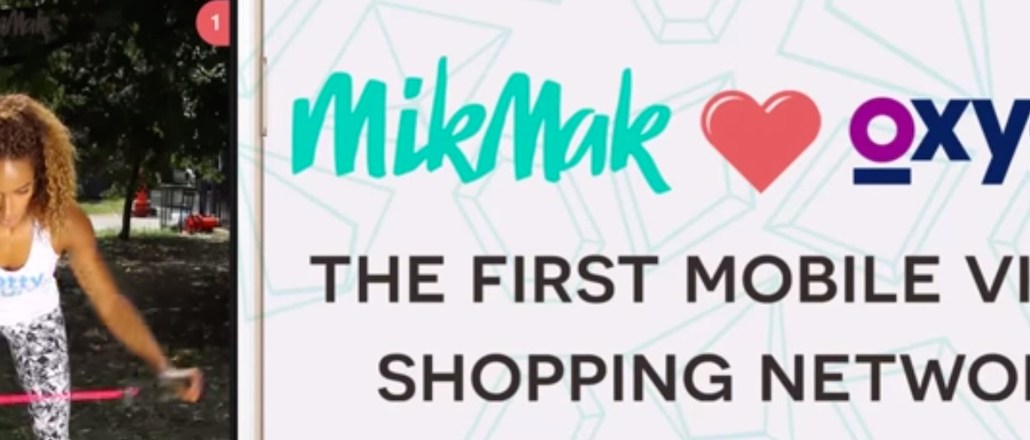
MikMak may be just a little over four months old, but the video shopping app has already managed to convince some of the biggest brands that it is the place to be to get in front of millennial shoppers. It has unveiled a new series of branded videos, already boasting such companies as GE, American Express, Oxygen and Mondelez’s Swedish Fish.
Launched in beta in February, MikMak is essentially the Home Shopping Network crossed with BuzzFeed — a quirky original video network that lets visitors watch “influencers” and funny people give product demonstrations and purchase goods, all from their phones. Until now MikMak has handled content creation and production for its retail partners, asking only for a percentage of each sale.
The new infomercial format, called “Blank Presents,” lets brands get more involved in the content creation — placing their own short, quirky videos or “minimercials.” A brand can sponsor a different series in the app with each video being 30 seconds long, shoppable and marked as sponsored within the app’s feed which is refreshed with new content every day.
GE’s video, for instance, has Eliot Glazer from Comedy Central’s “Broad City” hosting “Conversations Over Dim Sum,” in which he interviews creative people (and promotes lightbulbs).
American Express will soon sponsor a series which showcases emerging small businesses as a part of its “Shop Small” campaign, which highlights the importance of supporting independent businesses.
“Every brand is thinking about how to use mobile content, engagement and commerce to drive business,” founder and CEO Rachel Tipograph told Digiday. “MikMak is the expert in short-form mobile video to drive not only engagement but also conversion.”
Since its beta-launch earlier this year, the mobile video shopping app has already worked with over 200 small brands selling their products on the platform, producing over 750 minimercials. It hosts an array of inventive products priced at below $100 across accessories, beauty, gadgets, jewelry, home goods and kitchenware on its platform, promoting them through its short and punchy shoppable infomercials.
Social commerce has also been a trend and on the minds of several other players this year, with YouTube’s shoppable ads and Google’s click-to-buy button as some of the prominent examples.
While Tipograph declined to comment on sales, viewership and audience numbers for MikMak, she said that the fact that an average user returned multiple times a week and watched 15 videos back-to-back helped draw brands. Further, advertisers can also embed the shoppable videos into their own websites or on other social media channels.
“The content isn’t meant to just live on our platform, the embeddable videos can live anywhere across our vast ecosystem of brand and media partners,” she said.
Tipograph added that there’s something for everyone. Brands get to tap into MikMak’s network of sketch comedy actors and stand-up comedians to brainstorm on the creative together. And those brands looking for some buzz and engagement can also buy sponsored series. Oxygen Media, for instance, is sponsoring a series called “Tone Alone,” in which Elyse Brandau of “Veep” sells home-fitness equipment from Lifeline while promoting the network’s new reality show “Pretty.Strong.”
And, of course, the app is another way for brands to grab those millennial eyeballs, with Tipograph estimating that 75 percent of its users are millennial women between the ages of 18 and 34.
“This gives us a new opportunity to make millennials experience the brand,” said Steven Pepe, global leader of commercial marketing at GE. “It is humorous and snappy, and if it gets them to think about lightbulbs in a new way, we will do it again.”
“They take a creative approach to the mechanics of selling with their mobile-based entertainment channels that are not only fun to watch but also effectively integrate products,” said Lisa Hsia, evp of digital at Bravo and Oxygen Media. “We feel MikMak will resonate with Oxygen’s millennial audience who are often early adopters of the latest technology.”
More in Marketing

Best Buy, Lowe’s chief marketing officers explain why they launched new influencer programs
CMOs launched these new programs in response to the growing importance of influencers in recommending products.

Agencies create specialist units to help marketers’ solve for AI search gatekeepers
Wpromote, Kepler and Jellyfish practices aim to illuminate impact of black box LLMs’ understanding of brands search and social efforts.

What AI startup Cluely gets — and ad tech forgets — about attention
Cluely launched a narrative before it launched a tool. And somehow, it’s working.





